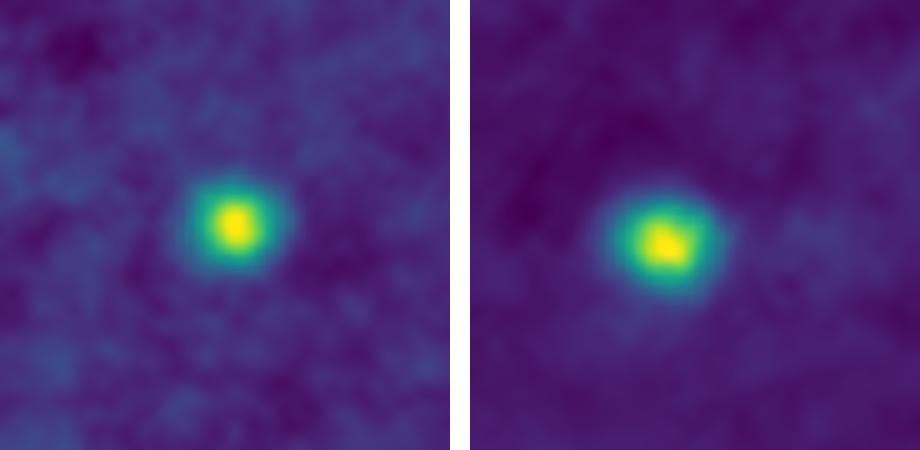Nasa shares the most distant picture ever taken
The new image breaks the 27-year-old record set by the 'Pale Blue Dot' picture

Your support helps us to tell the story
From reproductive rights to climate change to Big Tech, The Independent is on the ground when the story is developing. Whether it's investigating the financials of Elon Musk's pro-Trump PAC or producing our latest documentary, 'The A Word', which shines a light on the American women fighting for reproductive rights, we know how important it is to parse out the facts from the messaging.
At such a critical moment in US history, we need reporters on the ground. Your donation allows us to keep sending journalists to speak to both sides of the story.
The Independent is trusted by Americans across the entire political spectrum. And unlike many other quality news outlets, we choose not to lock Americans out of our reporting and analysis with paywalls. We believe quality journalism should be available to everyone, paid for by those who can afford it.
Your support makes all the difference.You've never seen a picture taken from further away than this.
A new image of objects in the distant Kuiper Belt, shared by Nasa, is most distant picture ever taken. It was beamed back to Earth from the New Horizons spacecraft, which shot the data 3.79 billion miles back to us.
New Horizons is only the fifth spacecraft to reach beyond the outer planets of our solar system. That means that many of the things it does break records – late last year it did the most distant course-correction move ever, and when it flies past an object on the edge of our solar system at the beginning of 2019 it will be the most distant planetary encounter ever.
The image isn't only the furthest ever taken from Earth. It's also the closest pictures ever taken of the mysterious objects in the Kuiper belt, the strange cluster of objects towards the edges of our solar system that New Horizons will continue to explore.
Nasa hopes to use New Horizons to learn more about the objects in the Kuiper Belt, understanding more about the shapes and surfaces of its distant and strange inhabitants.
For the moment, though, it's in hibernation as it flies through space. It will be woken up in June, when it will begin preparations for its big encounter on New Year's Day 2019.
The new picture breaks a 27-year-old record that was set by the Voyager 1 spacecraft as it headed on its way out of our solar system. As it did, it turned around and took the famous "Pale Blue Dot" picture, actually made out of 60 different images.
That picture would become famous in part because of Carl Sagan's writing about it. In a famous passage, he described the feelings of looking at the tiny image of Earth, and the feelings it could provoke.
"Look again at that dot," the extract begins. "That's here. That's home. That's us. On it everyone you love, everyone you know, everyone you ever heard of, every human being who ever was, lived out their lives."
The full passage can be read at The Planetary Society's website.
Soon after the Pale Blue Dot picture was taken, the cameras were turned off on Voyager 1, leaving its record unchallenged for the next 27 years. But New Horizons actually broke it twice – first taking another image of the "Wishing Well" star cluster, then breaking it again two hours later with another stunning image.
Join our commenting forum
Join thought-provoking conversations, follow other Independent readers and see their replies
Comments